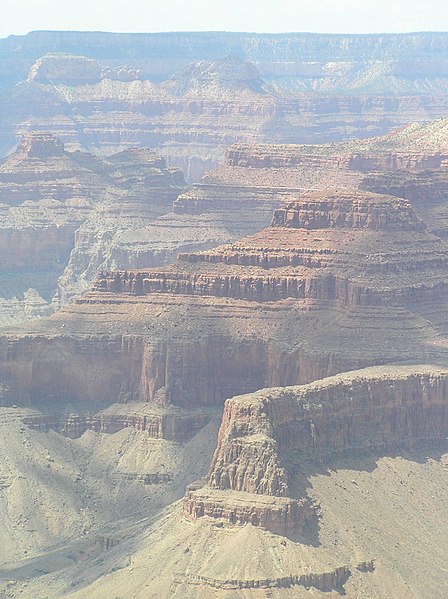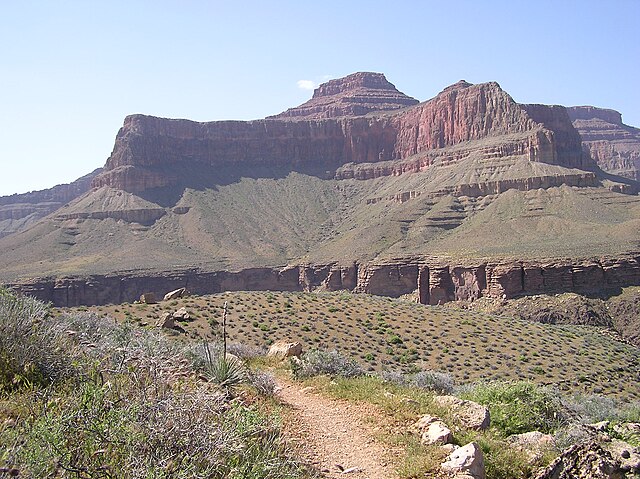Surprise Canyon Formation
The Surprise Canyon Formation is a geologic formation that consists of clastic and calcareous sedimentary rocks that fill paleovalleys and paleokarst of Late Mississippian (Serpukhovian) age in Grand Canyon. These strata outcrop as isolated, lens-shaped exposures of rocks that fill erosional valleys and locally karsted topography and caves developed in the top of the Redwall Limestone. The Surprise Canyon Formation and associated unconformities represent a significant period of geologic time between the deposition of the Redwall Limestone and the overlying Supai Group.
Pattie Butte-(Newton Butte), The ridgeline, north sits on Redwall Limestone 'platform'–(2-places, photo-bottom-left, top of red Redwall cliff), and topped by 2nd-platform of Surprise Canyon Formation.
Dramatic Redwall Limestone cliffs, on ridgeline (cliffline) south, and part of the Tower of Set, East Granite Gorge (Inner Gorge, Grand Canyon)
The Tower of Set on Inner Gorge-(east Granite Gorge).(View, from across Granite Gorge (south side, short Tapeats Sandstone cliffs visible at top of Gorge), from the Tonto Trail.)
The Redwall Limestone is a resistant cliff-forming unit of Mississippian age that forms prominent, red-stained cliffs in the Grand Canyon, ranging in height from 500 feet (150 m) to 800 feet (240 m).
Redwall Limestone cliff, and upper platform of cliff extension (resting on very short Muav Limestone cliff), from Tower of Set, central Grand Canyon, adjacent Granite Gorge. The bottom of Redwall cliffs typically rest on sections of Temple Butte Formation-(locally), or attached sections of Muav Limestone cliffs (regionally exposed in Grand Canyon, elsewhere in Arizona, not always with surface exposure).



